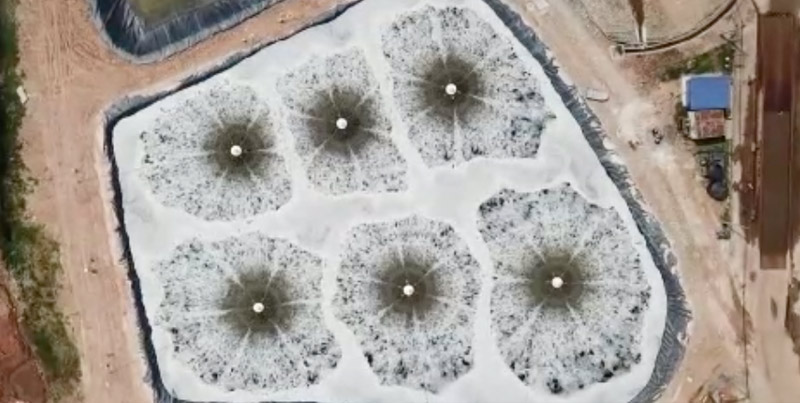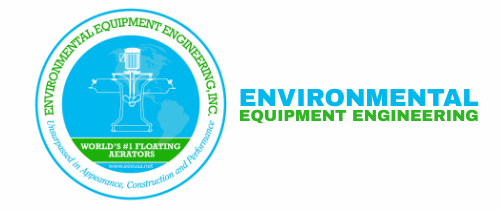
One of the most common methods for treating high volume wastewater in rural areas are wastewater lagoons, also referred to as ‘wastewater treatment lagoons’. Lagoon aeration is often utilised as part of this process, in the form of floating or submersible mechanical aerators due to their low running costs and low maintenance requirements.
As land prices are typically more affordable in smaller towns and rural areas the cost for establishing a wastewater lagoon system in comparison to other mechanical methods of wastewater treatment is far less.
Types of Wastewater Treatment Lagoons
Wastewater Treatment Lagoons are often designed to incorporate more than one lagoon in series or parallel. When more than one lagoon is in operation each treatment lagoon is referred to as a cell. Multiple cell treatment lagoon systems are often more effective than a single lagoon system.
Parallel Lagoon Systems
The cells of parallel lagoon systems receive wastewater through the lagoon inlet pipe (or multiple inlets) at the same time. Parallel systems can incorporate either an additional cell or multiple cells depending on the demands of the system.
In Series Lagoon Systems
In series lagoon systems mean the cells are part of a series, where wastewater is enters the first cell before being discharged into the remaining cells of the system. The advantage of an in-series lagoon is a higher rate of settlement of contaminants before discharge.
Pros and Cons of Wastewater Lagoons
Wastewater lagoon systems require less energy to operate, utilising a combination of natural and cost effective treatment options such as aeration: the process enabling air to be mixed, dissolved or circulated through a body of water and in general are not complicated to operate and maintain.
Although they do require a limited amount of maintenance to avoid odor and insect breeding problems.
| Pros | Cons |
|
|
So while wastewater lagoons are an effective method for containing and treating wastewater the wastewater contained within does normally require treatment if it is to be reused in any capacity such as for irrigation.
One of the most affordable and efficient methods for the treatment of lagoon wastewater is mechanical aeration.
Types of Mechanical Lagoon Aeration Systems
Two of the most common forms of mechanical aeration utilised in wastewater treatment lagoons are:
Surface Aerators (also known as Floating Aerators)
Surface aerators sit on the surface of the water and mix oxygen with the wastewater. Most of the aeration process takes place near the surface of the water. this method is particularly effective in shallow lagoons where depth of aeration and the accumulation of sludge isn’t extensive
Floating surface aerators are more portable than other aeration methods such as diffused air aeration and much simpler to install. They are also less affected by rough surface conditions and surfactants which create a barrier affecting oxygen transfer.
Environmental Equipment Engineering’s range of floating aerators have pumping flow rates 30% higher than competing aerators, meaning they are more efficient than competitor models and have a lower energy demand. They are also highly durable and come with a ten year warranty on all non-moving parts.
Submersible Aerators
Submersible aerators are advantageous in colder climates where icing of the components of a floating surface aerator are more likely to create problems.
Environmental Equipment Engineering’s range of submersible aerators are designed with simplicity in mind, with only four replaceable parts, and a one-piece continuous shaft that reduces any possibility of shaft coupling problems.
Summary
Interested in learning more about how wastewater treatment lagoons and mechanical aeration? Speak to the experts today at Environmental Equipment Engineering. With over 45 years experience we have the experience and expertise to provide cost-effective, efficient solutions to wastewater treatment.
